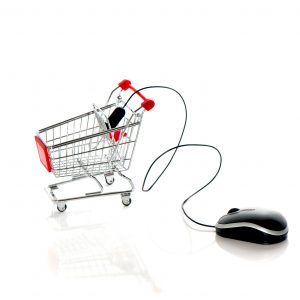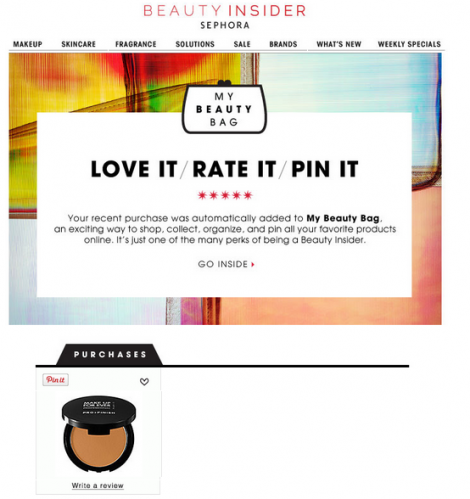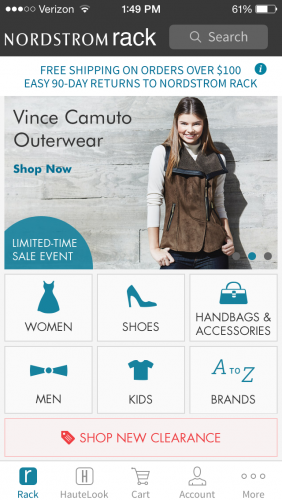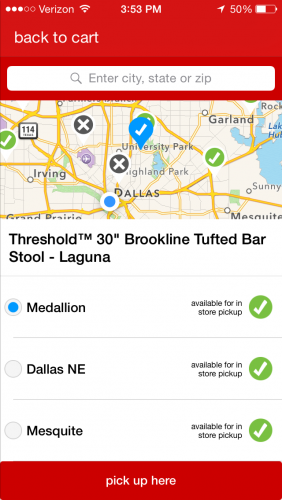Culture of Innovation
Innovation is risky business, but not innovating is even riskier. In a world where technologies are rapidly changing, companies must be willing to evolve in stride. Several companies are doing so by shifting to an omnichannel marketing strategy. Omnichannel approaches are synchronizing the shopping experience across mediums for retailers.
Some retailers have successfully incorporated omnichannel strategy into their marketing strategy. Over the next few weeks, we will examine a trilogy of retailers and the wins they have achieved through an omnichannel approach. Today, we are going to focus on one of the most popular luxury retailers- Nordstrom.
Part I: Nordstrom
Nordstrom worked to reinvent itself around the omnichannel shopper. According to the President of Stores, James Nordstrom, retailers need to focus more on the total experience than strategy for specific channels; “[At Nordstrom, we] don’t think the customer is loyal to channels. We don’t hear customers talk about channels very much. Customers value experiences.” Consequently, this belief is guiding Nordstrom’s omnichannel strategy towards creating a synchronized and seamless customer experience.
Rewards Program
The omnichannel focus of the Nordstrom Rewards loyalty program gives customers a chance to gain points regardless of which channel they purchase items.These loyalty members can also then track their activity from anywhere. Shoppers can use their mobile number as identification instead of memorizing a loyalty account number. An omnichannel approach to the rewards program has given Nordstrom a more open policy focus. The open policy focus allows shoppers to pay in whichever method they choose, shop whichever way suits them and still gain more loyalty points and rewards. Nordstrom shoppers are winning more, ensuring customer loyalty.
Social Media Influence
The luxury retailer is also approaching shopping from a multichannel perspective, and one of their innovative initiatives has been integrating with the mobile application, Instagram, and social media/organization platform, Pinterest. Nordstrom has made it possible to buy items from Instagram and find items based on Pinterest favorites. Instagram has been a modeling platform for retail items. However, a grievance shoppers have, is the inability to locate and buy the items presented on Nordstrom’s Instagram account. The retailer’s Instagram account now features a link which directs customers to Like2Buy, a platform that makes Instagram shopping easy. All of the items available for sale from the retailer’s feed are displayed as an elegant grid of photos. Shoppers can then scroll and “like” items, which are curated into a personal wishlist or shopping cart.
Pinterest is a social media platform which allows users to “pin” things they like or want to “boards” for later reference. It indexes all the different items, ideas, and interests we come across online. Pinterest gives Nordstrom insight of which items are popular among shoppers. Nordstrom has brought these “pinned” items to their physical stores. Stores display commonly tagged or “pinned” items from Pinterest. The luxury retailer also adopted that feature on their website. Shoppers can now see a “Top Pinned” landing page on the site. Nordstrom doesn’t limit themselves to a single channel. The retailer has effectively leveraged their social media user base to enhance the shoppers’ experience by including the favorite and trendy items on Instagram and Pinterest in their stores. Not only do customers see more products, but they are buying more at one time and are coming back for more of the items they love.
Nordstrom had experienced success by understanding that customers value an enhanced experience. Nordstrom has provided its customers with a retail experience that spans online, offline, and social media outlets. Shopping has become a synchronized and seamless experience – Customers can easily find the products they love and find them from anywhere. Tune in next week as we take a closer look at Neiman Marcus and how they are using omnichannel marketing to benefit their shoppers.




 Buy in store, receive an email asking for a review. I recently purchased foundation from Sephora at one of their mall locations and received this email a few days later.
Buy in store, receive an email asking for a review. I recently purchased foundation from Sephora at one of their mall locations and received this email a few days later.

 Target’s omnichannel experience consists of ship-to-store, pick-up at store, ship-to-home, an ecommerce website, and a mobile app. Target’s mobile app allows for customers to pinpoint exactly where items are located in the store, down to the precise aisle of where they reside. Other features of the mobile app include adding items to your virtual cart and selecting pick up in store, a map of the store layout, a coupon/savings section, shopping list, registry list, and wish list among others.
Target’s omnichannel experience consists of ship-to-store, pick-up at store, ship-to-home, an ecommerce website, and a mobile app. Target’s mobile app allows for customers to pinpoint exactly where items are located in the store, down to the precise aisle of where they reside. Other features of the mobile app include adding items to your virtual cart and selecting pick up in store, a map of the store layout, a coupon/savings section, shopping list, registry list, and wish list among others.